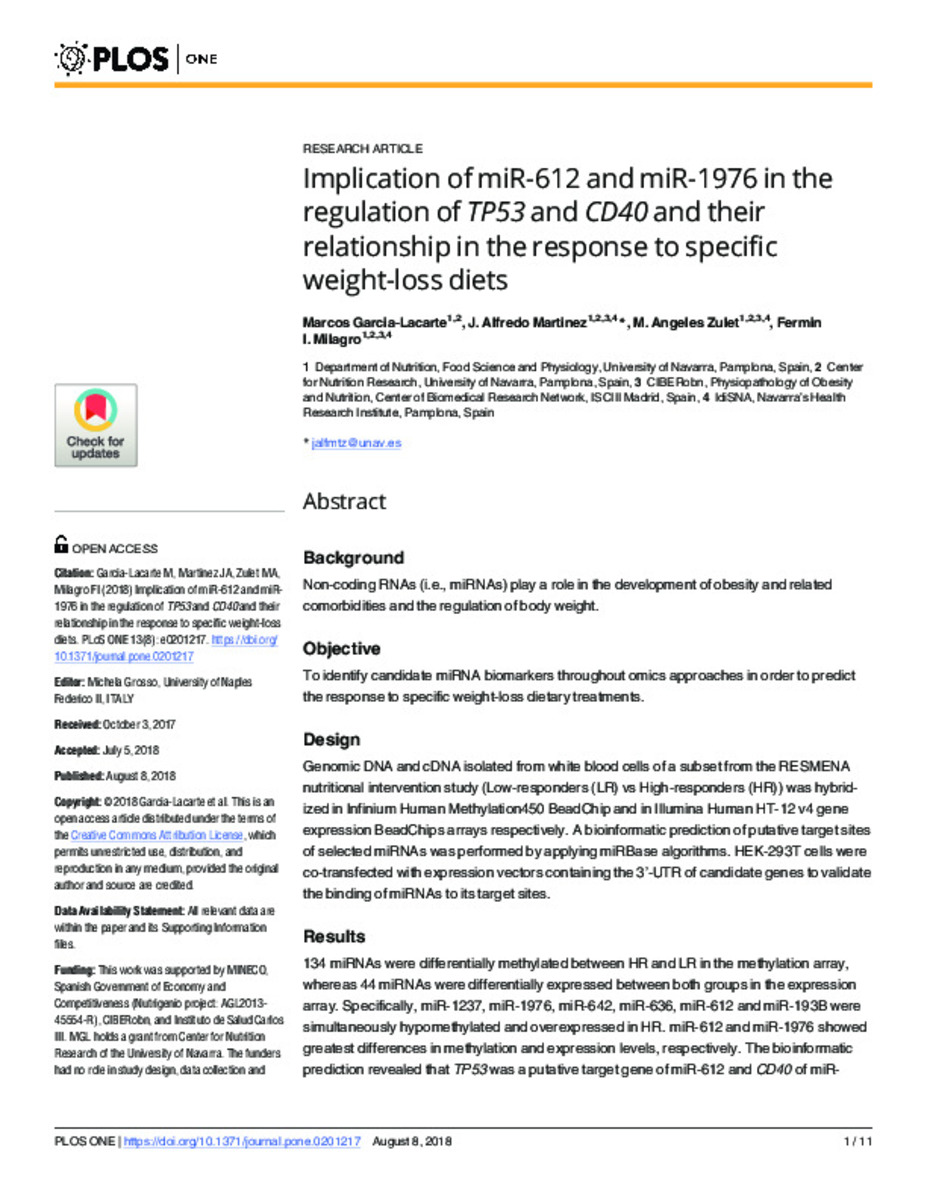Implication of miR-612 and miR-1976 in the regulation of TP53 and CD40 and their relationship in the response to specific weight-loss diets
Keywords:
Circulating Micrornas
Cancer-Detection
Adipose-Tissue
Obesity
P53
Adipocytes
Atherosclerosis
Adipogenesis
Methylation
Activation
Note:
This is an
open access article distributed under the terms of
the Creative Commons Attribution License, which
permits unrestricted use, distribution, and
reproduction in any medium, provided the original
author and source are credited.
Citation:
García-Lacarte, M. (Marcos); Martinez, J.A. (José Alfredo); Zulet, M.A. (María Ángeles); et al. "Implication of miR-612 and miR-1976 in the regulation of TP53 and CD40 and their relationship in the response to specific weight-loss diets". Plos One. 13 (8), 2018, e0201217
Statistics and impact
0 citas en

0 citas en

Items in Dadun are protected by copyright, with all rights reserved, unless otherwise indicated.







